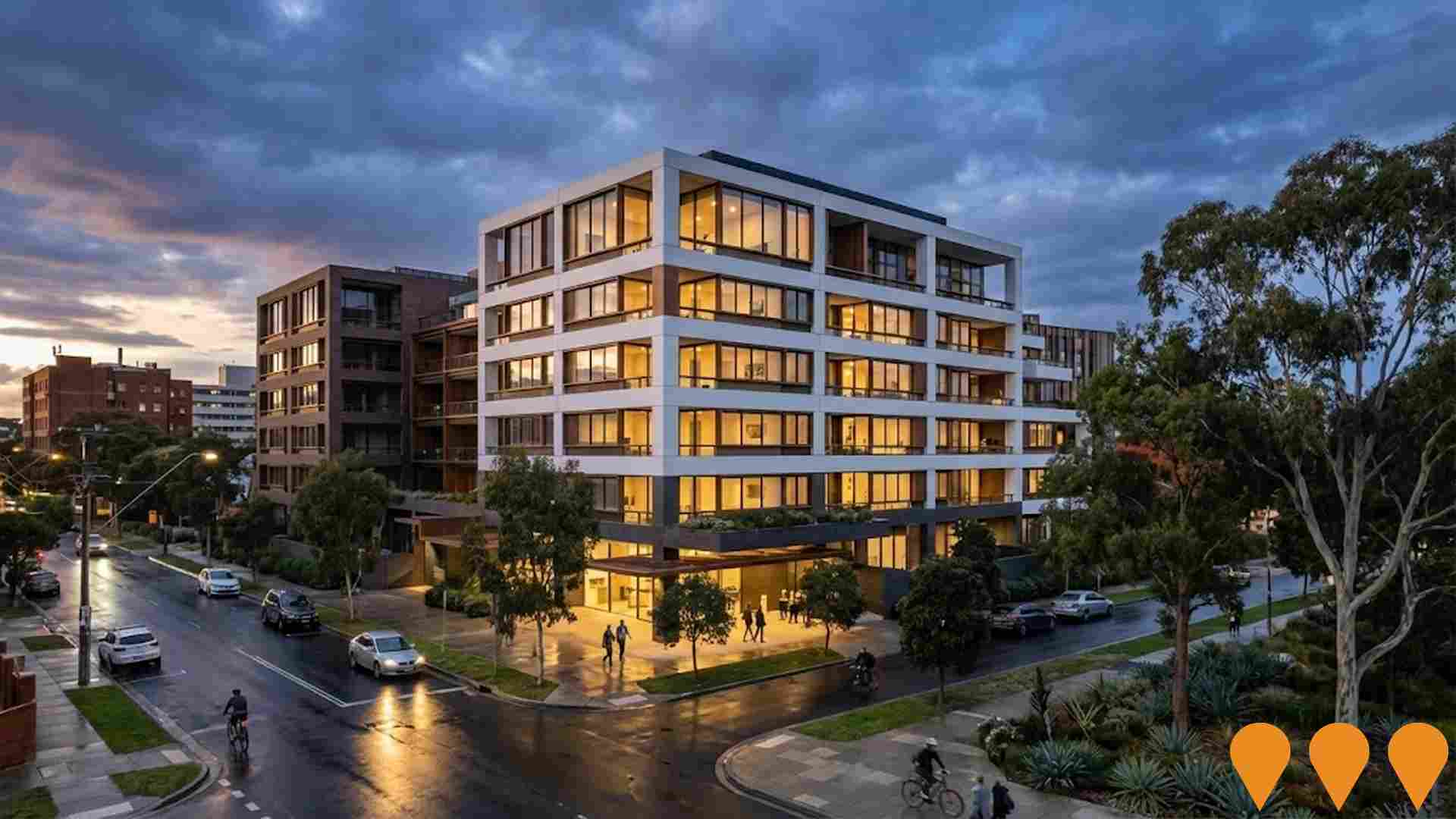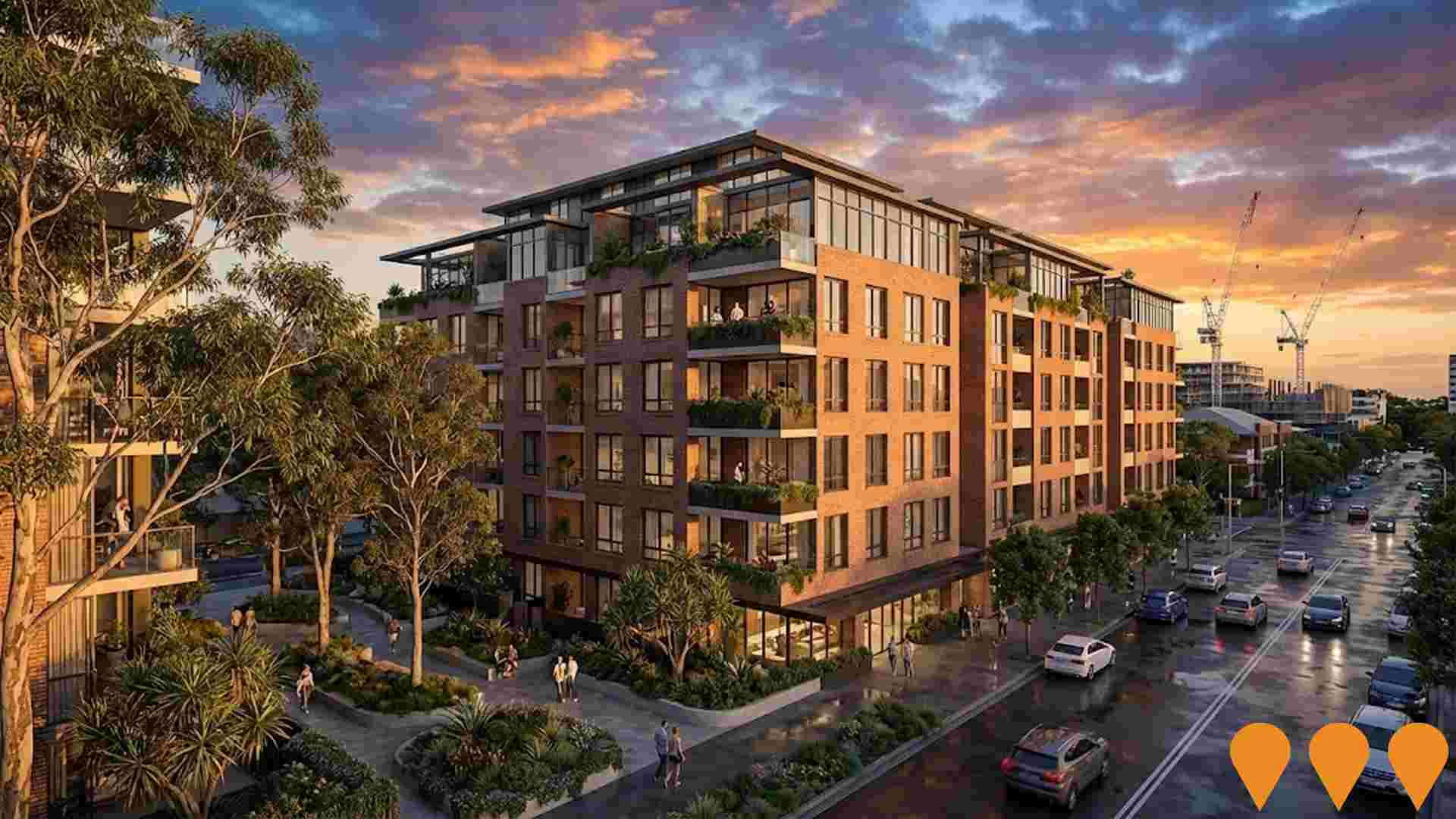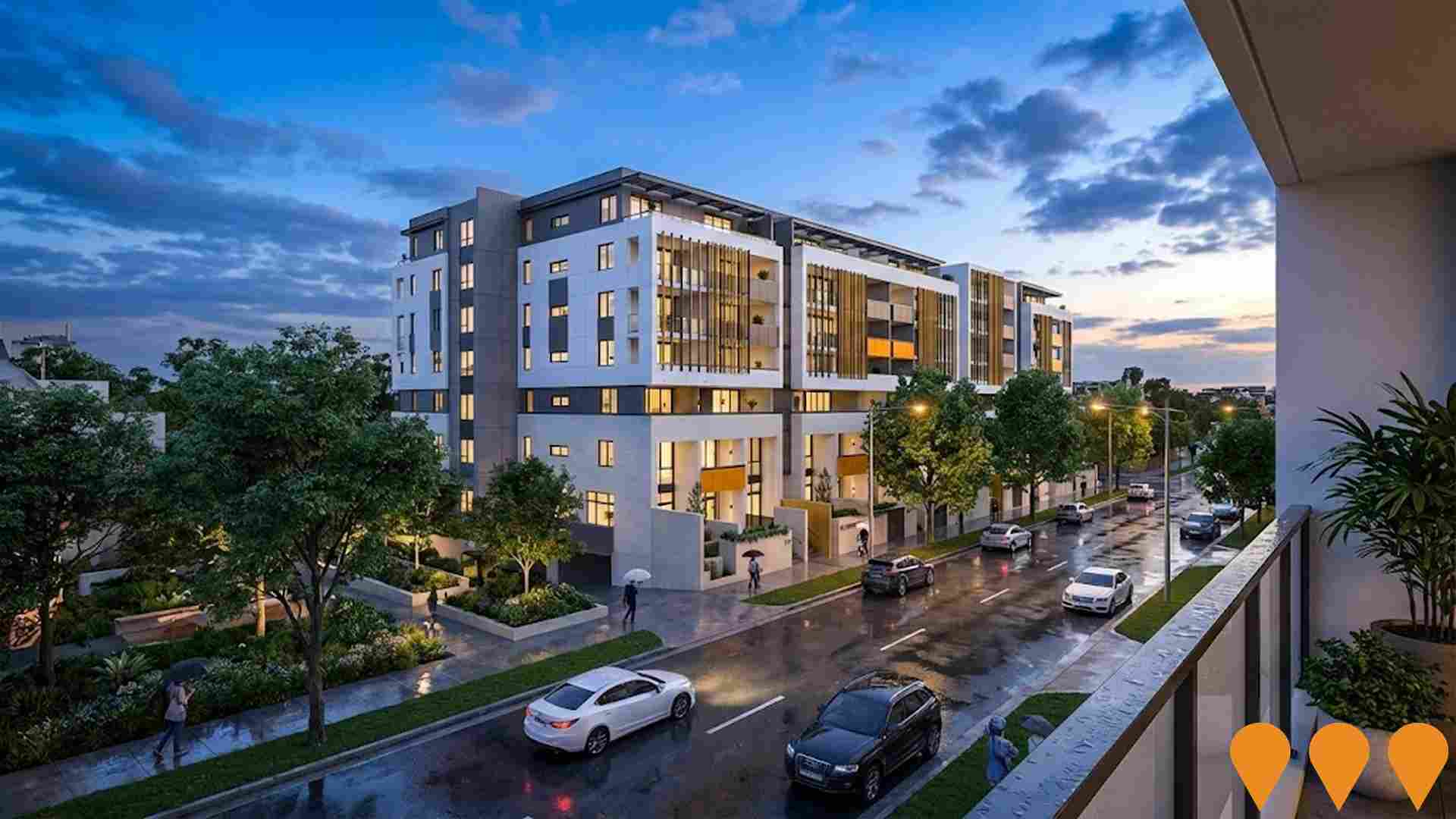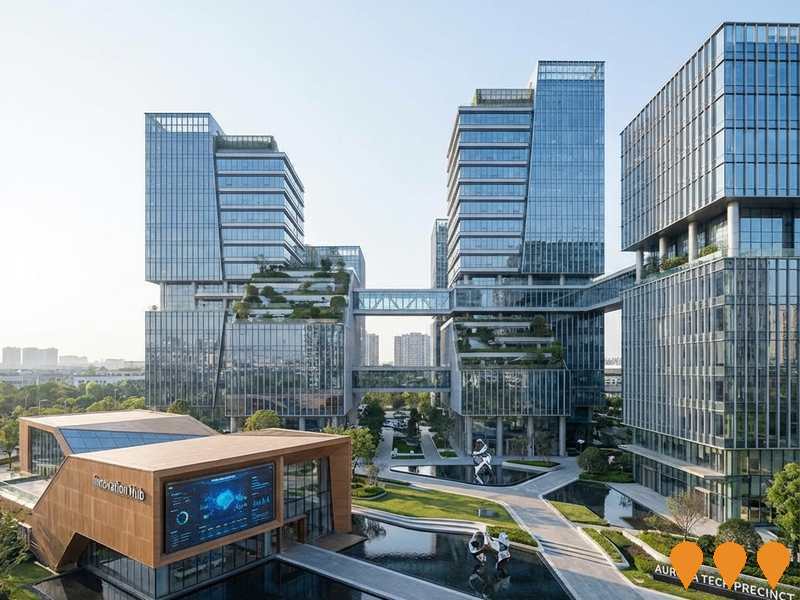Chart Color Schemes
est. as @ -- *
ABS ERP | -- people | --
2021 Census | -- people
Sales Activity
Curious about local property values? Filter the chart to assess the volume and appreciation (including resales) trends and regional comparisons, or scroll to the map below view this information at an individual property level.
Find a Recent Sale
Sales Detail
Population
Zetland lies within the top 10% of areas nationally in terms of population growth performance according to AreaSearch analysis of short and medium-term trends
Zetland's population is approximately 15,671 as of August 2025. This figure represents an increase of 3,049 people, a 24.2% rise since the 2021 Census which recorded a population of 12,622. The change is inferred from the estimated resident population of 14,313 in June 2024 and an additional 1,102 validated new addresses since the Census date. This results in a population density ratio of 19,588 persons per square kilometer, placing Zetland in the top 10% of national locations assessed by AreaSearch, indicating high demand for land in the area. Zetland's growth rate exceeded both the state (6.4%) and metropolitan area levels since the 2021 Census, positioning it as a regional growth leader. Overseas migration contributed approximately 80.2% of overall population gains during recent periods.
AreaSearch is using ABS/Geoscience Australia projections for each SA2 area released in 2024 with a base year of 2022. For areas not covered, NSW State Government's SA2 level projections released in 2022 with a base year of 2021 are employed. Growth rates by age group from these aggregations are applied to all areas for the years 2032 to 2041. Based on projected demographic shifts, Zetland is forecasted to increase its population by 4,632 persons by 2041, representing a total gain of 20.9% over the 17-year period.
Frequently Asked Questions - Population
Development
The level of residential development activity in Zetland was found to be higher than 90% of real estate markets across the country
Zetland has seen approximately 416 new homes approved annually. Over the past five financial years, from FY21 to FY25, 2084 homes were approved, with none yet approved in FY26. On average, one new resident arrived per year for each new home approved between FY21 and FY25.
This suggests that supply is meeting or exceeding demand, providing more buyer choices while supporting potential population growth above projections. The average construction value of these new properties was $554,000. In the current financial year, $6.7 million in commercial approvals have been registered, indicating Zetland's primarily residential nature. Comparatively, Zetland shows 455% higher new home approvals per capita relative to Greater Sydney, offering buyers greater choice. This high level of developer confidence is above the national average. Recent building activity consists solely of townhouses or apartments, reflecting a trend towards denser development that caters to downsizers, investors, and entry-level buyers.
With approximately 58 people moving in for each dwelling approval, Zetland exhibits characteristics of a growth area. Future projections indicate Zetland will add around 3274 residents by 2041. Based on current development patterns, new housing supply should readily meet demand, presenting good conditions for buyers and potentially facilitating population growth beyond current projections.
Frequently Asked Questions - Development
Infrastructure
Zetland has very high levels of nearby infrastructure activity, ranking in the top 10% nationally
Changes in local infrastructure significantly affect an area's performance. AreaSearch has identified 32 projects that could influence the area. Notable projects are Green Square Town Centre, The Kingsborough, Alba, and Meriton Green Square Stage 2 Development. Below is a list of projects likely to have the most impact.
Professional plan users can use the search below to filter and access additional projects.
INFRASTRUCTURE SEARCH
 Denotes AI-based impression for illustrative purposes only, not to be taken as definitive under any circumstances. Please follow links and conduct other investigations from the project's source for actual imagery. Developers and project owners wishing us to use original imagery please Contact Us and we will do so.
Denotes AI-based impression for illustrative purposes only, not to be taken as definitive under any circumstances. Please follow links and conduct other investigations from the project's source for actual imagery. Developers and project owners wishing us to use original imagery please Contact Us and we will do so.
Frequently Asked Questions - Infrastructure
Green Square Town Centre
Australia's largest urban renewal project covering 278 hectares in Sydney's south. By 2030 the precinct will deliver over 30,500 new homes for 61,000 residents and 21,000 jobs. Key completed facilities include Green Square Library (2018, Gunyama Park Aquatic Centre2021, Drying Green park and the new town square. Multiple residential and mixed-use buildings are under construction or recently completed by Mirvac, Landcom and private developers. Infrastructure works including new roads, cycleways, stormwater harvesting and public domain continue across the precinct.
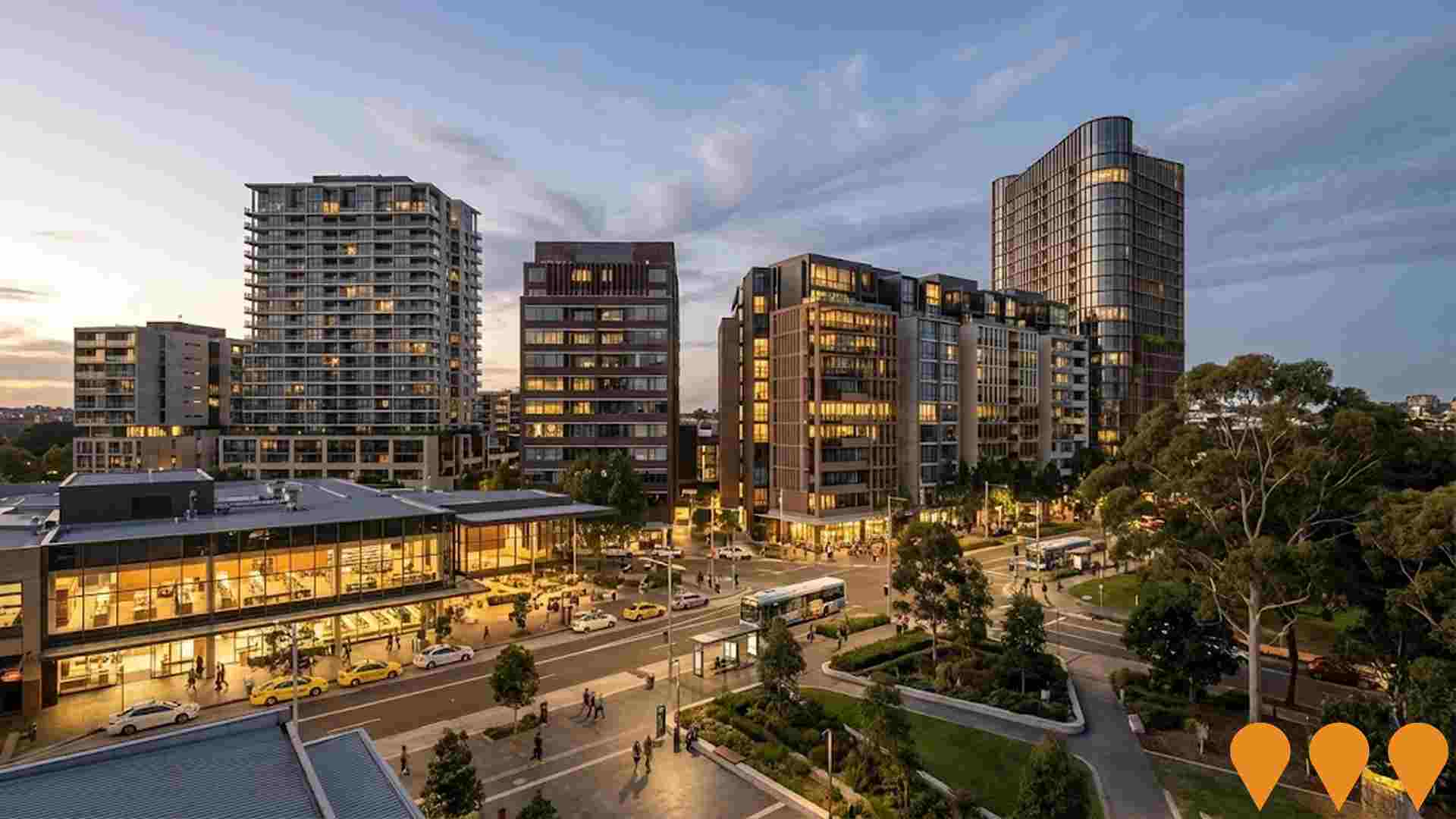
Zetland Square
Large-scale mixed-use precinct by Meriton in the Green Square urban renewal area. The concept proposal (SSD-10327) for building envelopes and public domain was approved in May 2024. Multiple staged development applications are now progressively lodged and under assessment/active determination in 2025, delivering approximately 1,200 apartments (increased from original estimates), retail, childcare, new roads, through-site links and significant public open space.
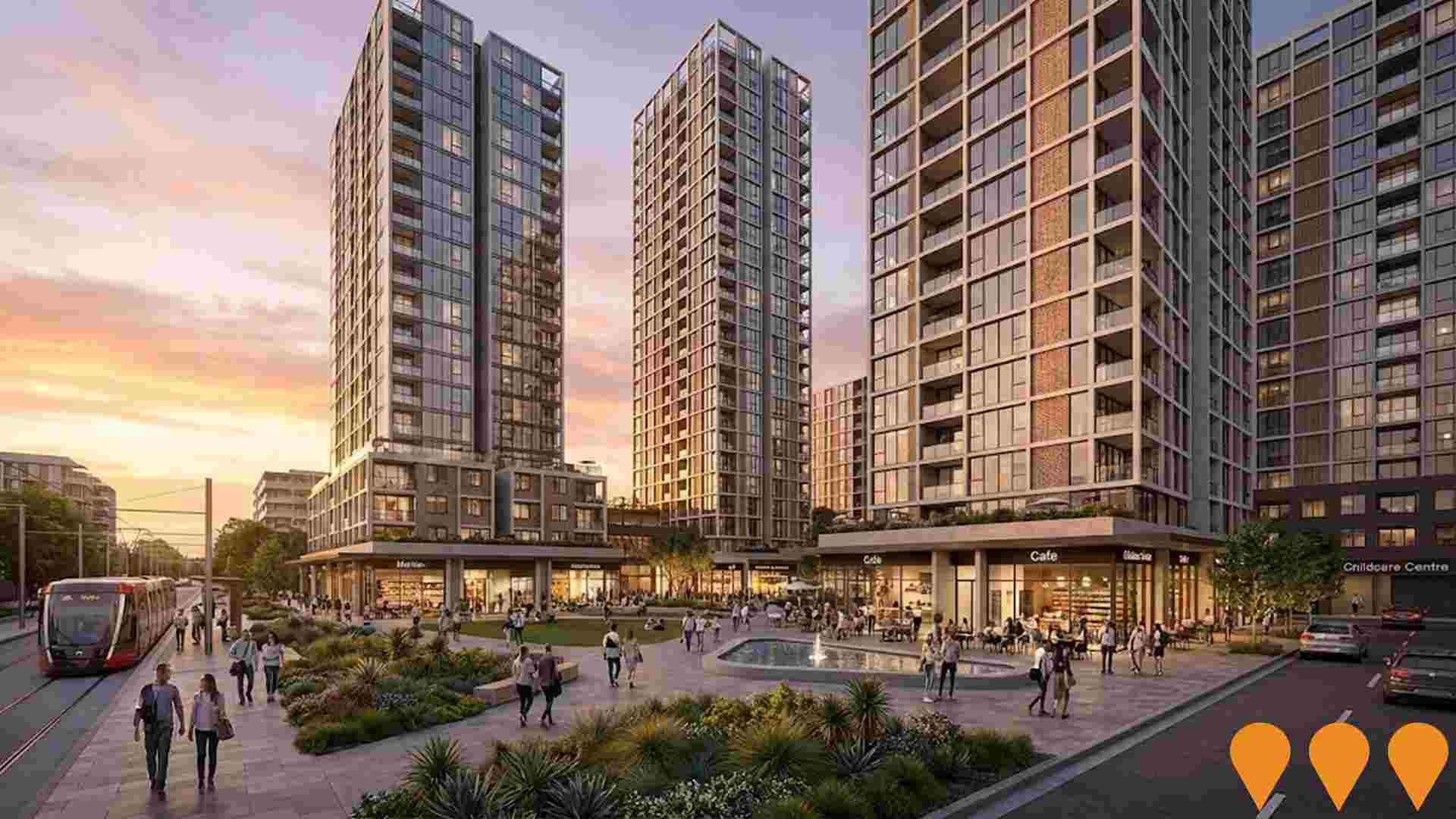
Waterloo Metro Quarter
Major mixed-use over-station precinct development above the new Waterloo Metro Station (Sydney Metro City & Southwest line). Delivered by Mirvac in joint venture with John Holland. Comprises four buildings with approximately 700 residential apartments (including build-to-rent), student accommodation, social and affordable housing (70 social + 5% affordable), retail, commercial office space and significant public domain improvements. Construction commenced 2023, first buildings targeting completion 2026-2027.

Zetland Square
Large-scale mixed-use urban renewal of the former Suttons City Holden site in Zetland. The masterplanned precinct will deliver approximately 784 apartments across multiple towers up to 25 storeys, ground-floor retail and commercial spaces, new public streets, laneways and a central civic plaza. Planning controls were approved in May 2024. A staged Development Application (SSD-52984707) is currently lodged and under assessment with the NSW Department of Planning.

Danks Street District
A mixed-use development by DASCO, comprising 373 apartments across six buildings up to eight storeys, with ground-floor retail, basement parking, and communal facilities. Designed by Bates Smart and MHNDU, the project transforms a former industrial site into a vibrant urban precinct adjacent to the Danks Street creative hub.

Gunyama Park Aquatic and Recreation Centre
A state-of-the-art aquatic and recreation facility in Green Square, featuring a 50m outdoor pool, learn-to-swim pools, spa, sauna, gymnasium, group fitness studios, and a cafe. Named after the Aboriginal word meaning 'place of many waters,' it won a public architecture award from the Australian Institute of Architects and is modeled on Sydney's iconic beaches.
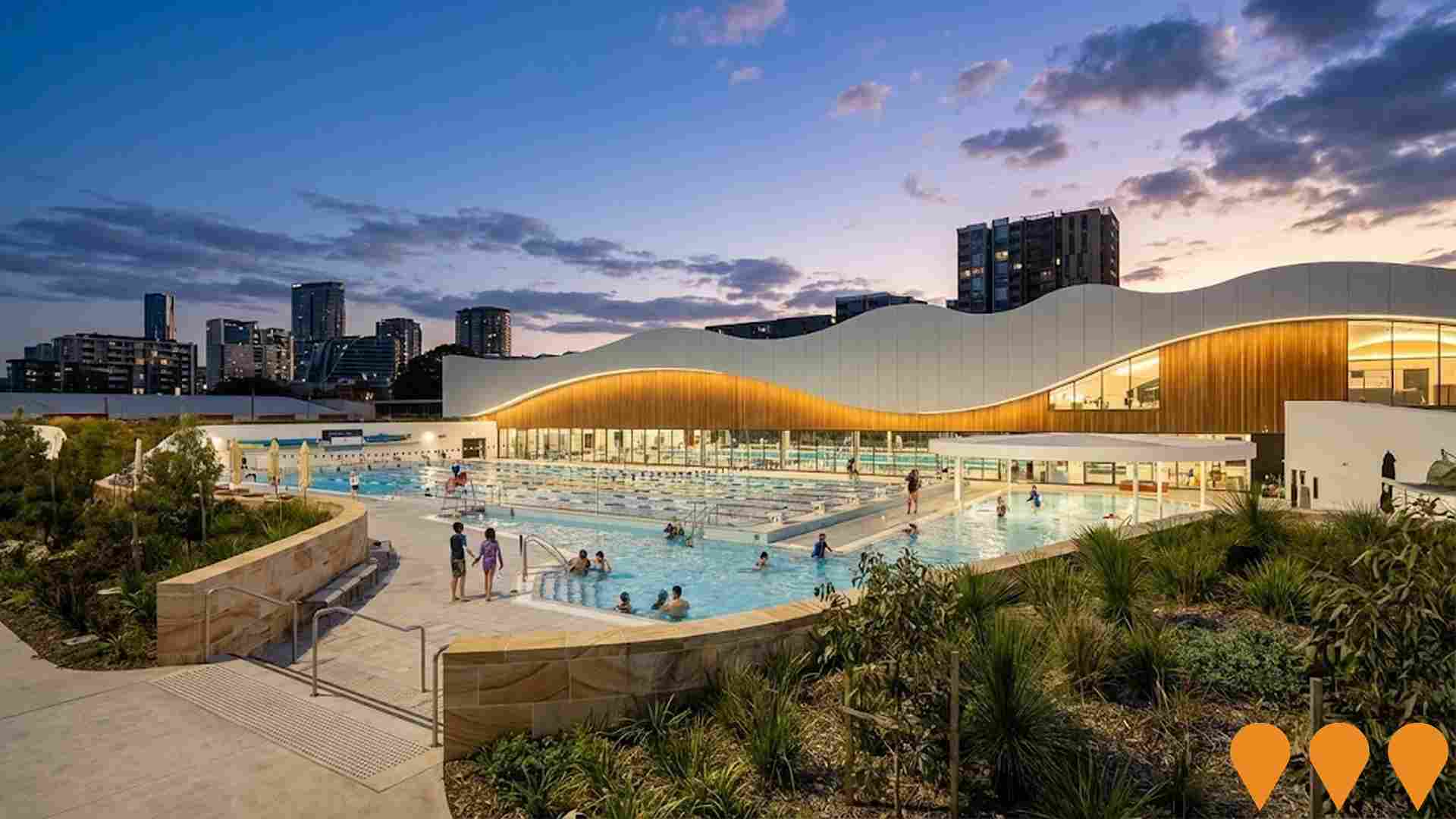
Acacia Apartments
A 257-apartment affordable housing development by City West Housing at 330-332 Botany Road, Alexandria (opposite Green Square Station). All units dedicated to affordable rental housing in perpetuity. Stage 2 DA approved December 2024, now under construction.

Meriton Green Square Stage 2 Development
Stage 2 of Meriton's masterplan featuring 282 apartments across 3-14 storey buildings, 656m2 of retail space, three basement parking levels, two new public parks, and enhanced connectivity. Part of larger 784-apartment masterplan with estimated cost of $179 million. Designed by Crone Architects with sustainable features and community benefits. Approved May 2025.
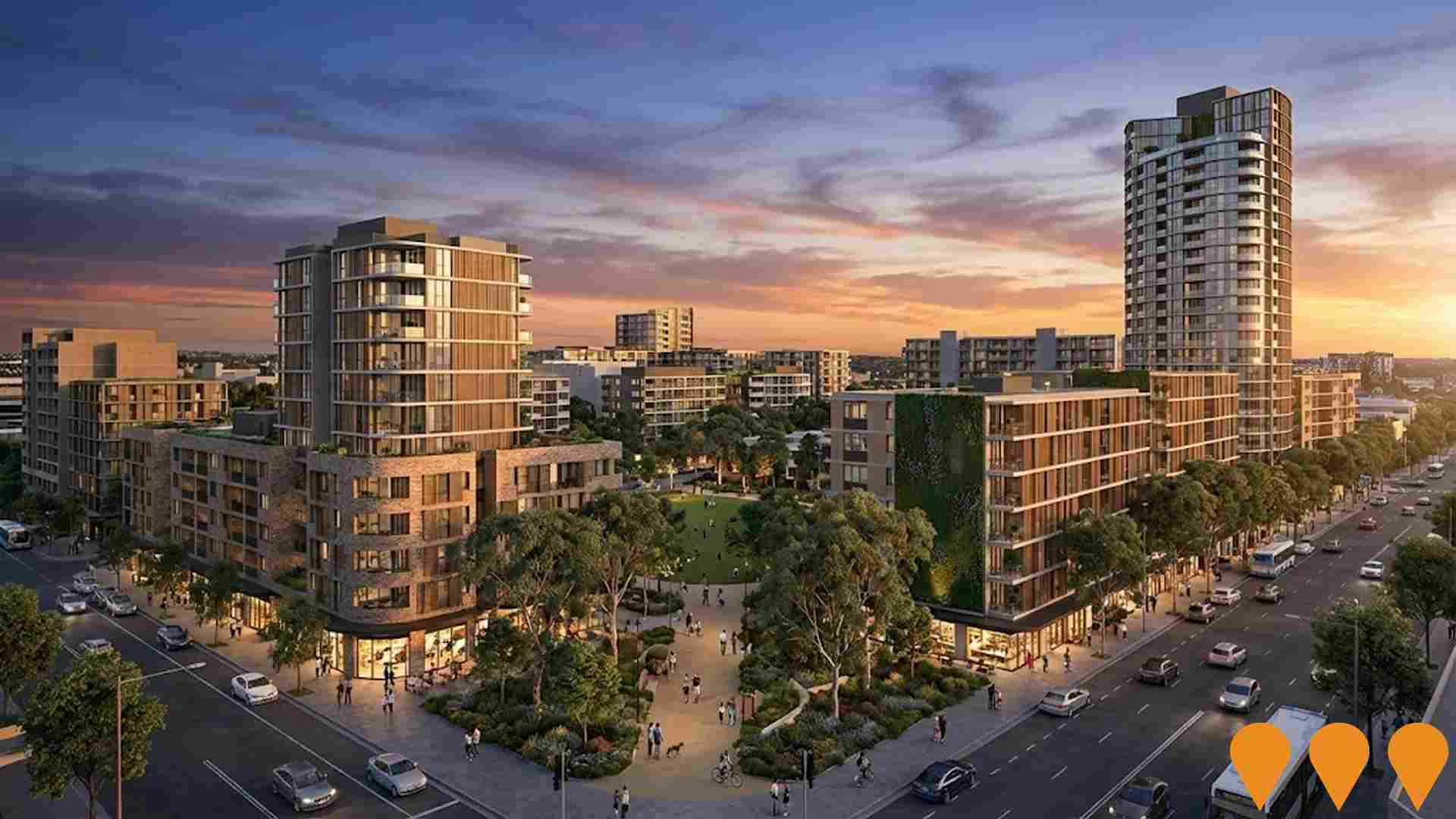
Employment
The exceptional employment performance in Zetland places it among Australia's strongest labour markets
Zetland has a highly educated workforce with a technology sector that stands out in terms of representation. Its unemployment rate was 1.9% as of June 2025, showing relative employment stability over the past year compared to Greater Sydney's rate of 4.2%.
A total of 9,814 residents were employed by June 2025, with workforce participation at 72.2%, surpassing Greater Sydney's 60.0%. Employment is concentrated in professional & technical (1.5 times the regional level), finance & insurance, and health care & social assistance sectors. However, health care & social assistance is under-represented, with only 9.0% of Zetland's workforce compared to Greater Sydney's 14.1%. The predominantly residential area appears to offer limited local employment opportunities, as indicated by the count of Census working population versus resident population.
Over the 12 months to June 2025, employment increased by 0.2%, while labour force increased by 0.6%, causing the unemployment rate to rise by 0.4 percentage points. In contrast, Greater Sydney saw employment growth of 2.6% and a labour force expansion of 2.9%, with unemployment rising by 0.3 percentage points. Jobs and Skills Australia's national employment forecasts from May 2025 project national employment growth of 6.6% over five years and 13.7% over ten years, but growth rates vary significantly between industry sectors. Applying these projections to Zetland's employment mix suggests local growth of approximately 7.1% over five years and 14.1% over ten years, though these are simple weighting extrapolations for illustrative purposes only.
Frequently Asked Questions - Employment
Income
Income metrics indicate excellent economic conditions, with the area achieving higher performance than 75% of national locations assessed by AreaSearch
Zetland had a median taxpayer income of $69,129 and an average of $84,315 in financial year 2022, according to postcode level ATO data aggregated by AreaSearch. This is significantly higher than the national figures for Greater Sydney, which were $56,994 median and $80,856 average during the same period. Based on a 12.61% growth in wages since financial year 2022, estimated incomes as of September 2025 would be approximately $77,846 median and $94,947 average. The 2021 Census reported individual earnings at the 94th percentile nationally were $1,262 weekly in Zetland. Distribution data showed that 35.6% of residents earned between $1,500 to $2,999 weekly, which was consistent with broader regional trends where 30.9% fell into the same category. Economic strength was evident with 32.8% of households achieving high weekly earnings exceeding $3,000. Despite high housing costs consuming 25.4% of income, disposable income remained at the 62nd percentile nationally. The area's SEIFA income ranking placed it in the 10th decile.
Frequently Asked Questions - Income
Housing
Zetland features a more urban dwelling mix with significant apartment living, with a higher proportion of rental properties than the broader region
Zetland's dwelling structures, as per the latest Census, consisted of 0.3% houses and 99.6% other dwellings (semi-detached, apartments, 'other' dwellings). In comparison, Sydney metro had 2.3% houses and 97.7% other dwellings. Home ownership in Zetland was at 7.6%, with mortgaged dwellings at 20.2% and rented ones at 72.2%. The median monthly mortgage repayment in Zetland was $2,642, below Sydney metro's $2,705. The median weekly rent figure in Zetland was $600, compared to Sydney metro's $550. Nationally, Zetland's mortgage repayments were higher at $1,863 and rents substantially above the national average of $375.
Frequently Asked Questions - Housing
Household Composition
Zetland features high concentrations of group households and lone person households, with a higher-than-average median household size
Family households account for 53.1% of all households, including 11.4% couples with children, 35.4% couples without children, and 4.3% single parent families. Non-family households constitute the remaining 46.9%, with lone person households at 31.7% and group households comprising 15.3%. The median household size is 2.0 people, which is larger than the Greater Sydney average of 1.9.
Frequently Asked Questions - Households
Local Schools & Education
Zetland performs slightly above the national average for education, showing competitive qualification levels and steady academic outcomes
Educational attainment in Zetland is notably high. Among residents aged 15 years and above, 61.7% hold university qualifications, surpassing the national average of 30.4% and the NSW average of 32.2%. Bachelor degrees are the most common at 38.7%, followed by postgraduate qualifications at 20.4% and graduate diplomas at 2.6%. Vocational pathways account for 19.1% of qualifications, with advanced diplomas at 9.6% and certificates at 9.5%.
Educational participation is high, with 30.6% of residents currently enrolled in formal education. This includes 18.1% in tertiary education, 2.9% in primary education, and 1.6% pursuing secondary education. Schools appear to be located outside immediate catchment boundaries, requiring families to access schools in neighboring areas.
Frequently Asked Questions - Education
Schools Detail
Nearby Services & Amenities
Transport
Transport servicing is high compared to other areas nationally based on assessment of service frequency, route connectivity and accessibility
Zetland has 18 active public transport stops, all of which are bus stops. These stops are served by 11 different routes that together facilitate 6,881 weekly passenger trips. The area's transport accessibility is rated excellent, with residents on average located just 111 meters from the nearest stop.
On a daily basis, these routes collectively run an average of 983 trips, which translates to approximately 382 weekly trips per individual stop.
Frequently Asked Questions - Transport
Transport Stops Detail
Health
Zetland's residents boast exceedingly positive health performance metrics with very low prevalence of common health conditions across all age groups
Health outcomes data for Zetland shows excellent results across all age groups, with very low prevalence of common health conditions. The rate of private health cover is exceptionally high at approximately 62% of the total population (9,778 people), compared to 69.7% across Greater Sydney and a national average of 55.3%. Mental health issues and asthma are the most common medical conditions in the area, affecting 5.6% and 5.5% of residents respectively.
A significant majority, 85.1%, report being completely clear of medical ailments, compared to 77.4% across Greater Sydney. Zetland has a lower proportion of seniors aged 65 and over at 4.0% (634 people), compared to 9.7% in Greater Sydney. Health outcomes among seniors are particularly strong, broadly aligning with the general population's health profile.
Frequently Asked Questions - Health
Cultural Diversity
Zetland is among the most culturally diverse areas in the country based on AreaSearch assessment of a range of language and cultural background related metrics
Zetland has a high level of cultural diversity, with 52.4% of its population speaking a language other than English at home and 66.1% born overseas. Christianity is the predominant religion in Zetland, comprising 30.5% of people. Judaism is slightly overrepresented compared to Greater Sydney, making up 1.2% of Zetland's population.
The top three ancestry groups are Chinese (27.3%), Other (16.5%), and English (14.9%). Notably, Russian (0.9%) and Spanish (0.9%) are slightly overrepresented compared to regional averages, while Korean is more significantly so at 1.4%.
Frequently Asked Questions - Diversity
Age
Zetland hosts a very young demographic, ranking in the bottom 10% of areas nationwide
Zetland's median age is 30 years, which is younger than Greater Sydney's average of 37 and Australia's median of 38. Compared to Greater Sydney, Zetland has a higher percentage of residents aged 25-34 (41.1%) but fewer residents aged 5-14 (3.7%). This concentration of 25-34 year-olds is significantly higher than the national average of 14.5%. According to post-2021 Census data, the 35-44 age group has increased from 17.7% to 19.8% of Zetland's population, while the 25-34 cohort has decreased from 42.4% to 41.1%. By 2041, demographic modeling suggests that Zetland's age profile will change significantly. The number of residents aged 25-34 is projected to grow by 1,073 people (17%), reaching 7,516 from the current 6,442. Conversely, the number of residents aged 35-44 is expected to decrease by 196.
